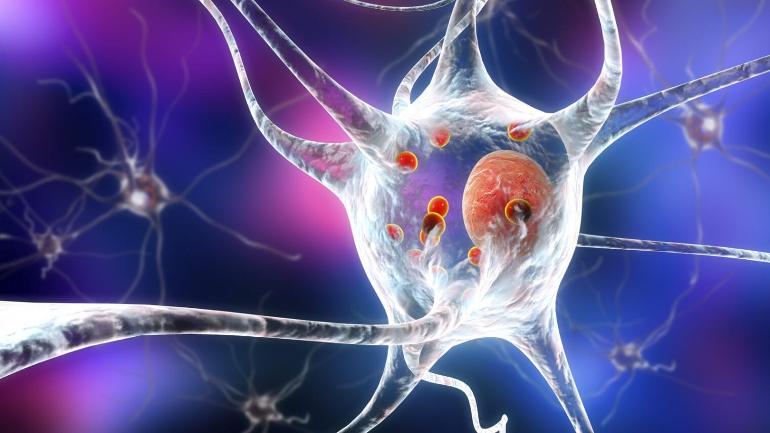Illustration of cells within the human brain. Photo by Kateryna Kon/Shutterstock
The discovery and research of a newly-found link between the brain’s structure and Parkinson’s could advance efforts to find a cure.
Researchers in Israel say they have established a “groundbreaking” connection between Parkinson’s disease and the “scaffolding” that supports cells in the brain.
This discovery opens up a whole new area of research into a neurodegenerative disorder that affects 10 million people globally, robbing them of the ability to walk and talk.
Experts at the University of Haifa say they have, for the first time, found a connection between Parkinson’s and the extracellular matrix (ECM), a mix of proteins and carbohydrates that provide cells with structural and biochemical support.
Results of the research by Prof. Shani Stern and her team at the university’s Sagol Department of Neurobiology have been published in the journal NPJ Parkinson’s Disease.
“Until now, most of the studies concerning Parkinson’s have focused on the cells and on synaptic connections,” she said. “The results of our study found changes in the extracellular matrix, which has not been a focus of Parkinson’s research.”
“To gain a deeper understanding of Parkinson’s disease and make progress in efforts to find a cure for the disease, we need to examine the changes that occur in the extracellular matrix.”
The exact cause of Parkinson’s disease remains a mystery, but it is known to result in damage to the nerve cells in two small but crucial areas of the brain (one on the left, one on the right) called substantia nigra.
These cells produce dopamine, the chemical that helps control movement. When they’re not working at full capacity, they don’t produce enough dopamine, resulting in tremors, stiffness and slowed movement.
The research team took skin cells from some Parkinson’s patients with a genetic link to the disease (a small minority), from patients who have a non-genetic link and from healthy participants as a control group.
They then reprogrammed the cells for all three groups so that they carried the same genetic information. They found evidence that in both types of Parkinson’s patients there were changes in the expression of numerous genes that encode proteins of the extracellular matrix.
In other words, there’s a link between Parkinson’s and the extracellular matrix that doesn’t exist with people who don’t have Parkinson’s.
“It was found that cells produced from Parkinson’s patients have less mRNA (the messenger molecule) and fewer proteins that build the extracellular matrix than cells produced from healthy individuals,” says a press release from the university.
“The researchers also discovered for the first time that the collagen 4 protein, which plays an important role in building the extracellular matrix, undergoes aggregation in Parkinson’s patients, but not in healthy individuals.”
The study was carried out in cooperation with the Salk Institute in San Diego, USA, Erlangen University in Germany, and UCL (University College London).
